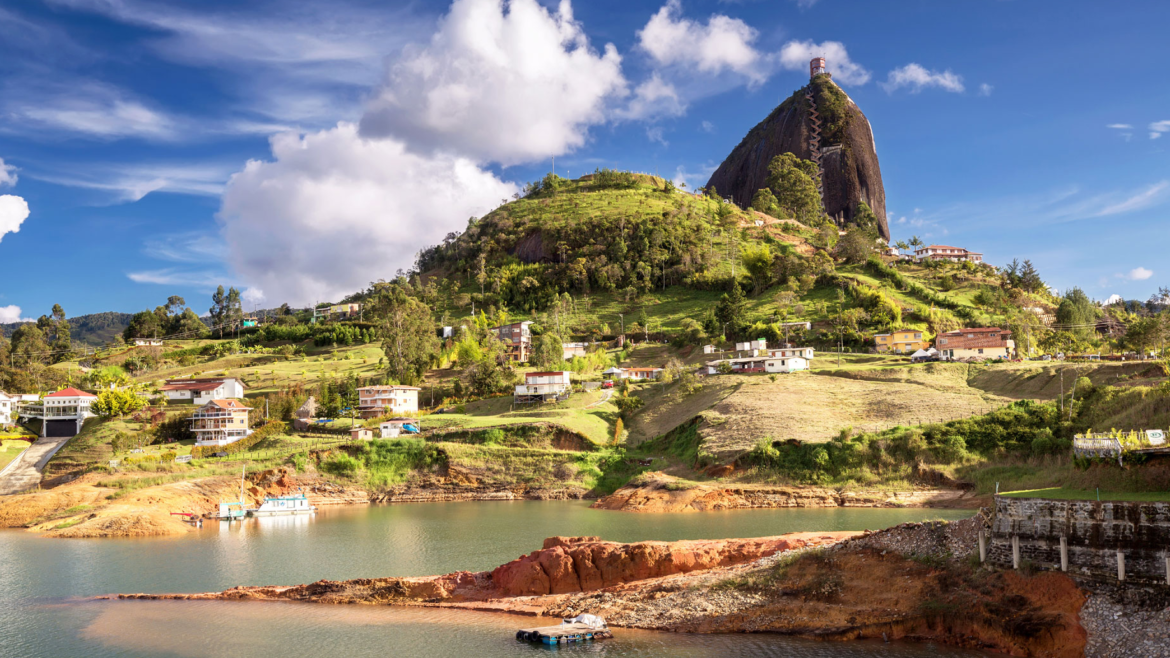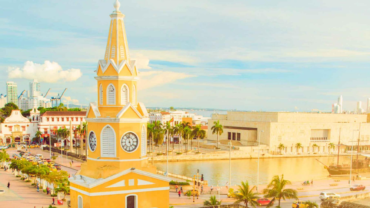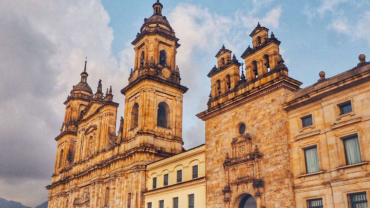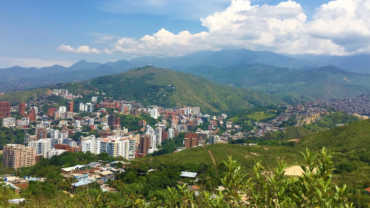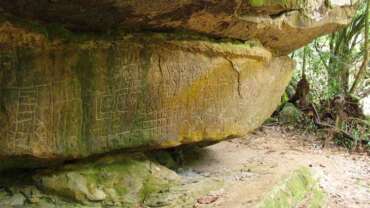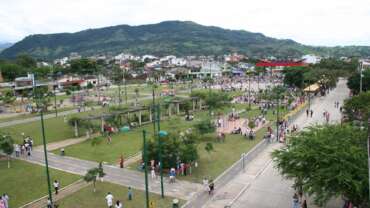Things to do in Colombia
Nature and Adventure
Looking for adventure in nature? Trekking, tourism on two wheels, exploration of protected areas, birdwatching, diving, community tourism, equestrian tourism, sport fishing and agrotourism are all part of the most welcoming place on Earth. Learn more here!
NATURE TOURISM OFFERED IN COLOMBIA: Nature, bird watching, whale watching and agrotourism.
Colombia is one of the richest countries in biological diversity, represented in its vast geography composed of two oceans, three mountain ranges and the highest snow capped mountain on a coast, extensive portions of the world’s moorlands, lush jungles and incomparable rivers. Being in the equatorial zone plus the geological conditions of the country allow to enjoy a variety of ecosystems and landscapes where natural experiences pursue the understanding and conservation of the large and notable natural heritage of the country.
Culture
Cultural expressions as significant as fairs and festivals in the country are a vehicle that allows to know the Colombians’ idiosyncrasies within its great cultural diversity.
Each region has infinite spaces in which converge the art, creativity, music and traditions that, for years, have built an imaginary about how the Carnivals, parades and festivals, among other cultural events take place every year in Colombia. Our religious festivities, the milestones of our history and even the triumphs of our athletes are events to celebrate. To know Colombia, you have to experience its festivals! We invite you to be part of them.
Health & Wellness
Hot Springs
A natural spa lies between the beach and the jungle a 30-minute walk south from Guachalito Beach near Nuquí. Dive into a pool of thermal water, bathe in the adjacent streams of cold water, smear sulfur mud on your skin, and enjoy a unique “jacuzzi experience.”
Chiles Volcano
The Chiles volcano, on the border between Ecuador and Colombia, is a challenge for climbers and mountaineers seeking a thrill on its rocky slopes. It is part of a chain of volcanos that includes Cumbal and Azufral. It rises to almost three miles above sea level and is bathed by streams originating in high moorland that give rise to rivers, ponds, and healing hot springs.
Tierrabomba Island
Tierrabomba, an island located south of Cartagena and north of Barú Island, is a destination easily reached by boat. Many visitors leave the Pegasus dock early in the morning and return to the city in the afternoon after enjoying a day of sun and sand.
Agua Tibia Hot Springs
Visitors to the Coconuco Agua Tibia Hot Springs seek leisure and health. The green-blue waters of the Springs reach 135 °Fat the source and 95°F in the pools. You can also hike and reach the source of the hot spring after climbing a small hill.
Boiling Water Hot Springs
The Boiling Water Hot Springs are located in Coconuco, 19 miles from Popayán. This site is managed by the Coconuco indigenous council and has several pools in which visitors can bathe. It also has seven cabins which can house up to 30 people. A children’s eco-park, managed by the community is located nearby.
Sun and Sand
Why do tourism Sun and Sand at Colombia?
Find a peaceful seashore haven in the white, yellow, and black sandy beaches of Colombia. The climate inland is always warm. Don’t forget your bathing suit!
Destinations for relaxation: Santa Marta, the islands of San Andrés and Providence, Cartagena and the Rosario Islands, Capurganá… There is no shortage of great beaches in Colombia.
Cruises
From the vibrant city of Cartagena de Indias with its fascinating history, or Santa Marta, where the legacy of its indigenous culture and an extraordinary diversity of landscapes merge with the sea, to San Andres, Providencia and Santa Catalina where you can experience a unique offer of beaches that blend with the exotic vegetation of virgin islands.
The Colombian Pacific is a sample of the great biodiversity of the country. Every year, between June and November, you can admire beautiful humpback whales and sea turtles that visit the country within the South Pole migratory route, to breed in our waters.
Colombia has become one of the most attractive destinations for cruises for its colorful landscapes.
Currently, more than 30 cruise lines are scheduled to arrive in Colombian ports. The shipping companies with the largest operation are Pullmantur, Princess Cruises, Holland America, Norwegian Cruise line, Celebrity Cruises, Aida Cruises and TUI Cruises, among others.
Community Tourism
Enjoy a Coffee Culture Tour
Dress up in traditional farmer’s clothes and walk through the trees to pick coffee beans in Calarcá, 7 4.3 miles east of Armenia. Here, you can visit Coffee Culture Tour (Recuca), a farm where you’ll learn about coffee production. Bogadera, a refreshing drink with brown sugar, cinnamon, and lemon is offered to visitors.
Yagua Indigenous Community
The Yagua Indigenous Community is located at the border between Colombia and Peru, near the Brazilian port of Tabatinga. This community is notable because its members still use hooks, spears, and tridents in their fishing activities. They also use bows and arrows and blowguns to hunt monkeys, sloths, and capybaras to survive.
Popayán
A sense of peace envelops those who walk the streets of Popayán, with its elegant white churches and residences. Founded in 1537 by Sebastian de Belalcázar, the capital of Cauca is one of the most important religious centers in Colombia. From this city, known for its excellent cuisine, you can visit nearby mountains, valleys, and lakes.
Why do LGBT tourism in Colombia?
Colombia is establishing itself as a destination that is increasingly friendly with the LGBT community (lesbians, gays, bisexuals and transsexuals). In 2016, it became the 24th country to approve equal marriage throughout the national territory and has an advanced legal system to protect the rights of this segment of the population. Thanks to this and to the cultural diversity, connectivity and wide offer of tourism, Colombia was named as Emerging LGBT Destination in the FITUR 2017 fair.
Cities such as Bogota, Medellin, Cartagena and Barranquilla have an attractive tourism offer for the LGBT segment. In all these cities you will find specialized events that manage to integrate the sabrosura of Colombians with the joy and festivity of the LGBT community. From marches of pride, to festivals of music and theater, in Colombia you will find a destination full of color and diversity.
Bogota has a broad gastronomic and cultural offer, luxury experiences and diverse accommodation options. Additionally, the city has the largest gay club in Latin America, attracting thousands of tourists from all over the region who can enjoy a unique experience through music and all the sabrosura that Colombians have.
In one place, Cartagena offers the possibility of going back in time through history, enjoy gastronomy of the highest level in a variety of restaurants recognized worldwide, go shopping to live an experience between the artisan and the modern, enjoy the Caribbean nightlife and visit beautiful beaches to relax a few kilometers away from the city.
In Medellin you can experience the optimism and hospitality of a thriving and cheerful society that will always welcome you with open doors and arms. Enjoy the Flower Fair in the first week of August to learn more about the idiosyncrasy that characterizes the culture of Antioquia.
Attend the Carnival of Barranquilla in February to dance in a party full of all the colors of the Colombian Caribbean and take the chance to live the Gay Guacherna to feel the joy of the LGBT community of the “arenosa”.
Holy Week
Holy Week in Popayán has been the country’s largest religious celebration since 1566. The processions were declared as an Intangible Cultural Heritage of Humanity by UNESCO in 2009. They attract thousands of visitors, who are fascinated by the rigor and solemnity of the participants, who carry figures representing the Passion of Christ on their shoulders.



